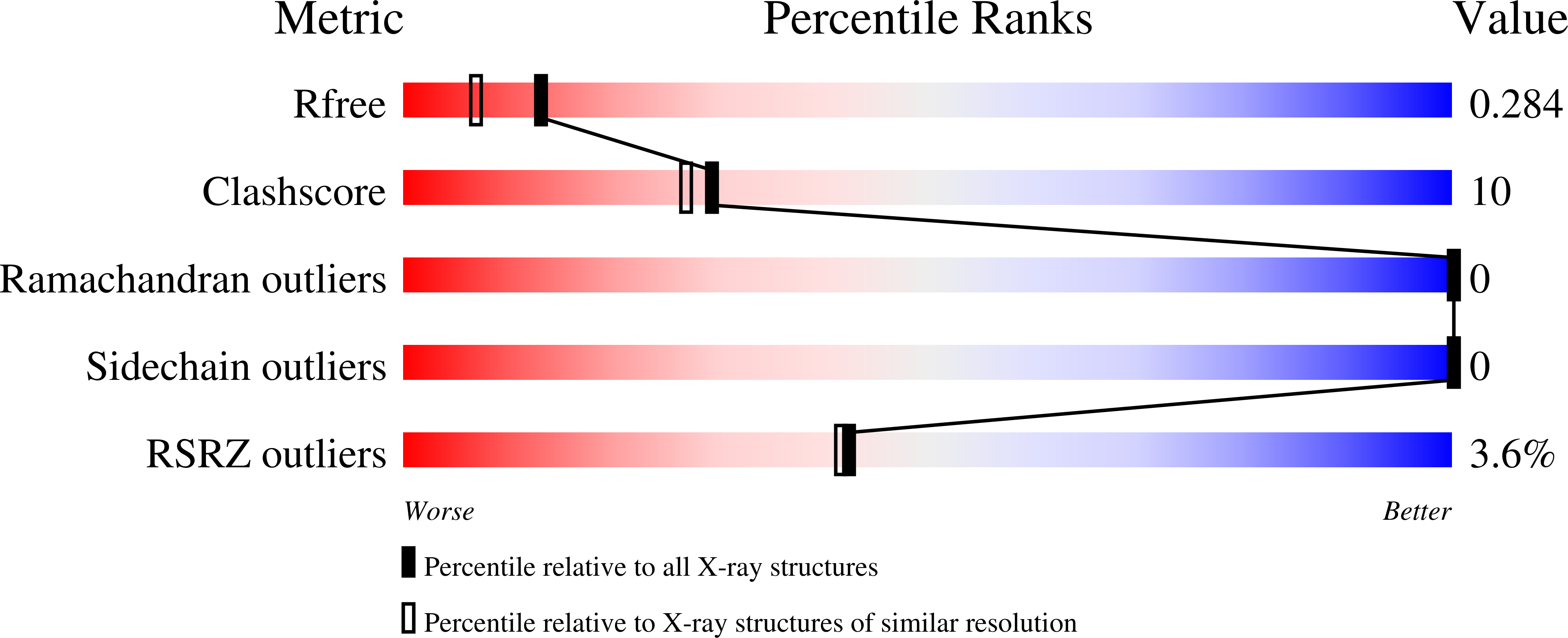De novo protein design of photochemical reaction centers.
Ennist, N.M., Zhao, Z., Stayrook, S.E., Discher, B.M., Dutton, P.L., Moser, C.C.(2022) Nat Commun 13: 4937-4937
- PubMed: 35999239
- DOI: https://doi.org/10.1038/s41467-022-32710-5
- Primary Citation of Related Structures:
5VJS, 5VJT, 5VJU - PubMed Abstract:
Natural photosynthetic protein complexes capture sunlight to power the energetic catalysis that supports life on Earth. Yet these natural protein structures carry an evolutionary legacy of complexity and fragility that encumbers protein reengineering efforts and obfuscates the underlying design rules for light-driven charge separation. De novo development of a simplified photosynthetic reaction center protein can clarify practical engineering principles needed to build new enzymes for efficient solar-to-fuel energy conversion. Here, we report the rational design, X-ray crystal structure, and electron transfer activity of a multi-cofactor protein that incorporates essential elements of photosynthetic reaction centers. This highly stable, modular artificial protein framework can be reconstituted in vitro with interchangeable redox centers for nanometer-scale photochemical charge separation. Transient absorption spectroscopy demonstrates Photosystem II-like tyrosine and metal cluster oxidation, and we measure charge separation lifetimes exceeding 100 ms, ideal for light-activated catalysis. This de novo-designed reaction center builds upon engineering guidelines established for charge separation in earlier synthetic photochemical triads and modified natural proteins, and it shows how synthetic biology may lead to a new generation of genetically encoded, light-powered catalysts for solar fuel production.
Organizational Affiliation:
Department of Biochemistry and Biophysics, University of Pennsylvania, Philadelphia, PA, 19104-6058, USA. ennist@uw.edu.


















